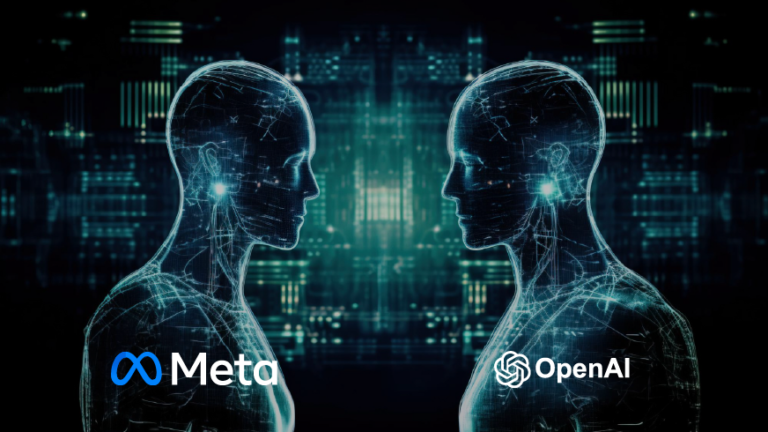The world of artificial intelligence is evolving at a breakneck pace, and a new contender from China is turning heads. Kimi k1.5, developed by Moonshot AI, a Beijing-based startup founded in 2023, is emerging as a powerful alternative to Western AI giants like OpenAI and Google. With its ability to process vast amounts of data, handle both text and images, and outperform established models in key benchmarks, Kimi k1.5 is poised to make a significant impact. This article explores what Kimi k1.5 is, its standout features, how it compares to other AI models, and its potential to reshape the global AI landscape.
What is Kimi k1.5?
Kimi k1.5 is a large language model (LLM) that leverages reinforcement learning (RL) to enhance its reasoning and problem-solving capabilities. Unlike traditional AI models that rely solely on predicting the next word in a sequence, Kimi k1.5 learns from interactions and feedback, allowing it to tackle complex tasks more effectively. Developed by Moonshot AI, a company backed by major investors like Alibaba and Tencent, Kimi k1.5 has quickly gained attention for its performance in areas like mathematical reasoning, coding, and multimodal processing. Since its release, it has been hailed as a potential rival to models like OpenAI’s GPT-4 and Anthropic’s Claude 3.5.
Key Features of Kimi k1.5
Kimi k1.5 boasts several innovative features that set it apart from its competitors. Below are its most notable attributes:
Multimodal Capabilities
Kimi k1.5 can process and understand both text and images, making it a versatile tool for diverse applications. For instance, it can analyze diagrams to explain scientific concepts or interpret product images for customer service tasks. This multimodal functionality broadens its use cases, from education to e-commerce, giving it an advantage over text-only models.
Extended Context Window
One of Kimi k1.5’s most impressive features is its ability to handle extremely long inputs. It supports a context window of up to 128,000 tokens, with some reports indicating it can process up to 200,000 Chinese characters in a single prompt (Medium by Sudha R). This allows it to maintain context over lengthy documents or complex, multi-step tasks, surpassing models like GPT-4, which maxes out at 32,000 tokens.
Reinforcement Learning Integration
By incorporating reinforcement learning, Kimi k1.5 can iteratively improve its performance. It uses techniques like online mirror descent for policy optimization, ensuring stable and effective decision-making (ArXiv Paper). This approach is particularly useful for tasks requiring trial and error, such as solving intricate math problems or generating code, where the model refines its solutions based on feedback.
Superior Benchmark Performance
Kimi k1.5 has demonstrated exceptional results on several benchmarks, often outperforming leading models. Key achievements include:
- MATH 500 and AIME: Excelling in mathematical reasoning tasks (Fello AI).
- LiveCodeBench: Achieving up to 550% better performance than GPT-4o in coding challenges (GitHub Moonshot AI).
- MathVista: Strong performance in multimodal math-related tasks (Analytics Vidhya).
These results highlight Kimi k1.5’s advanced reasoning and technical capabilities.
| Feature | Kimi k1.5 | GPT-4 | Claude 3.5 |
|---|---|---|---|
| Context Window | 128,000 tokens (up to 200,000 Chinese characters) | 32,000 tokens | ~32,000 tokens |
| Multimodal | Yes (text and images) | Limited | Yes |
| Benchmark Performance | Outperforms in MATH 500, AIME, LiveCodeBench | Strong but lags in some areas | Competitive but behind Kimi in key tests |
| Accessibility | Free, open-source | Subscription-based | Subscription-based |
Comparison with Other AI Models
Kimi k1.5 holds its own against leading AI models, with several advantages:
- Context Length: Its 128,000-token context window dwarfs GPT-4’s 32,000 tokens, enabling more comprehensive interactions (HoffnMazor Blog).
- Multimodal Processing: While GPT-4 has limited multimodal capabilities, Kimi k1.5’s ability to handle text and images makes it more versatile for tasks requiring visual data.
- Reasoning and Coding: Kimi k1.5’s superior performance in math and coding benchmarks, such as AIME and LiveCodeBench, suggests it may be better suited for technical tasks (The Indian Express).
- Cost and Accessibility: Unlike GPT-4 and Claude, which require subscriptions, Kimi k1.5 is free and open-source, lowering barriers to entry (MIT Technology Review).
However, comparisons depend on specific use cases, and models like GPT-4 may still excel in areas like creative writing or general conversation. Additionally, concerns about data privacy and potential government restrictions on Chinese AI models could affect Kimi k1.5’s global adoption (ArbiSoft Blog).
Availability and Accessibility
Kimi k1.5 is freely accessible through Moonshot AI’s web interface, making it available to anyone with an internet connection (Dataconomy). Users can interact with the model by typing queries or uploading images, and the intuitive design ensures ease of use for non-technical individuals. For developers, Moonshot AI offers API access and open-source tools, enabling integration into chatbots, automation systems, or research projects (Prismetric). This open-source approach fosters collaboration and innovation within the AI community.
How to Use Kimi k1.5
Using Kimi k1.5 is simple:
- Web Interface: Visit the Moonshot AI website to access the free chat interface, where you can input text or upload images for processing.
- Developer Tools: Developers can download the open-source code from GitHub (GitHub Moonshot AI) or use the API to integrate Kimi k1.5 into their applications.
- Applications: It’s suitable for tasks like academic research, code generation, content creation, and multimodal analysis.
The model’s versatility makes it valuable for students, professionals, and hobbyists alike.
Potential Impact
Kimi k1.5 has the potential to reshape the AI industry by offering a free, high-performing alternative to proprietary models. Its open-source nature could accelerate innovation, as developers worldwide build new applications leveraging its capabilities. For example, researchers can use Kimi k1.5 to analyze vast datasets, while businesses can create localized content for diverse audiences (MyScale Blog).
Moreover, Kimi k1.5 underscores China’s growing influence in AI development. With Moonshot AI and other startups like DeepSeek leading the charge, the global AI landscape is becoming more competitive (Medium by Ashley). However, challenges like data privacy concerns and potential regulatory restrictions could hinder its adoption in some regions.
The Future of Kimi k1.5
As Moonshot AI continues to innovate, future versions of Kimi k1.5 may feature even larger context windows, enhanced multimodal capabilities, or specialized tools for industries like healthcare or finance. The growing community around the open-source project could lead to new use cases and improvements, further solidifying its place in the AI ecosystem. Additionally, as China’s AI sector matures, collaborations between Eastern and Western developers may drive global advancements.
Conclusion
Kimi k1.5 is a groundbreaking AI model that combines reinforcement learning, multimodal processing, and an expansive context window to deliver exceptional performance. Its free and open-source nature makes it accessible to a wide audience, while its benchmark results position it as a serious competitor to models like GPT-4 and Claude. As Moonshot AI pushes the boundaries of AI innovation, Kimi k1.5 could play a pivotal role in shaping the future of artificial intelligence, both in China and beyond. However, users should remain mindful of potential privacy and regulatory challenges when adopting this technology.









